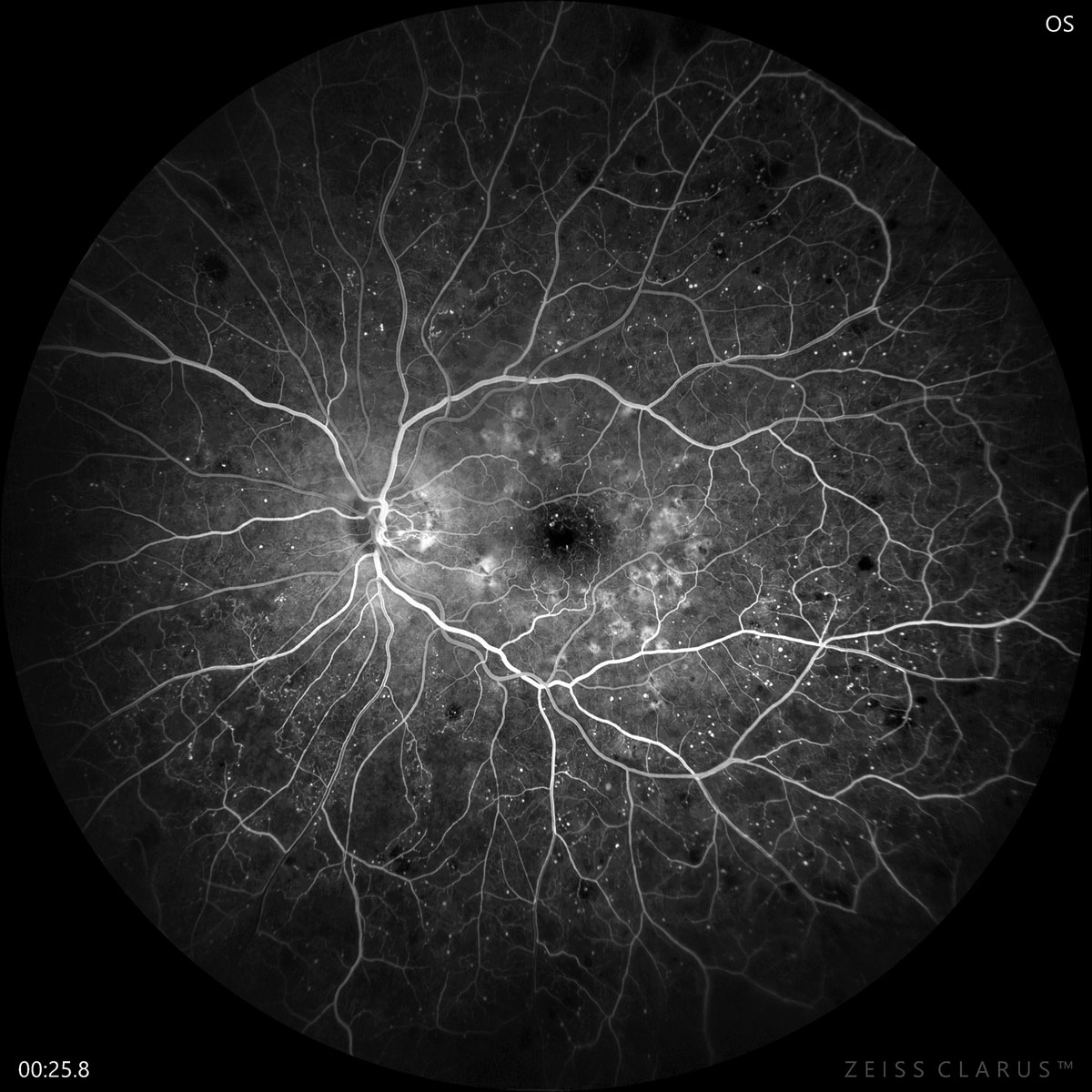Both research and anecdotal experience provide a long, successful track record for anti-VEGF use in treating a host of ocular conditions, including diabetic retinopathy (DR) and diabetic macular edema (DME). In previous studies, researchers have demonstrated the therapy’s impact on the rate of DR progression, but mostly within the confines of clinical trials. Now, a recent study published in BMC Ophthalmology takes a look at the treatment’s impact on the progression to proliferative diabetic retinopathy (PDR) among patients with nonproliferative DR (NPDR) in a practice setting.
 |
|
Researchers discovered that the rate of PDR was lower in eyes with severe NPDR that received anti-VEGF therapy compared to eyes that were untreated or treated with a laser alone. Photo: Jay Haynie, OD. Click image to enlarge. |
The researchers for this study assessed electronic medical records for a total of 135,324 treatment-naïve eyes and 10,142 previously treated with laser and/or anti-VEGF therapy before developing signs of PDR. Time to DME and PDR development by baseline NPDR severity was then determined.
“This retrospective study of eyes with nonproliferative diabetic retinopathy found presenting disease severity as a key predictor of diabetic macular edema and proliferative diabetic retinopathy development among anti-VEGF-naive eyes,” explained the researchers in their paper. The cumulative incidence rates of both DME and PDR were analyzed over a period of 48 months. DME incidence increased in eyes with mild (27.1%), moderate (51.2%) and severe (60.6%) NPDR. Similarly, incidence of PDR increased in eyes with mild (7.9%), moderate (20.9%) and severe (46.8%) NPDR.
Due to the inclusion of severe NPDR patients with a history of laser and/or anti-VEGF treatments before early onset signs of PDR, the researchers reported the cumulative incidence of PDR at 48 months: 50.1% for patients treated with laser, 27.4% for those who received anti-VEGF injections and 25.6% for those treated with both.
There were some limitations to this study. The researchers noted that the database only included data from 54 private clinics, so the dataset could be larger in future studies allowing for more variable results. Also, patients with age-related macular degeneration or retinal vein occlusion who were diagnosed with NPDR were not included in this study. Although the researchers believed that these conditions could have impacted their study, they noted that the small sample size of patients (1.9%) would have unlikely influenced the results. Furthermore, the researchers failed to account for the timing of the treatment during follow-up, the number of injections administered or the stage of NPDR at the time of treatment.
“Findings from this current analysis that reflects current trends may help inform management of patients with nonproliferative diabetic retinopathy and highlight the potential benefits of using anti-VEGF therapies, particularly to treat eyes with severe nonproliferative diabetic retinopathy, on an individualized basis,” concluded the researchers in their study.
Moshfeghi AA, Khurana RN, Moini H, et al. Impact of anti-VEGF treatment on development of proliferative diabetic retinopathy in routine clinical practice. BMC Ophthalmology. May 31, 2024. [Epub ahead of print]. |

